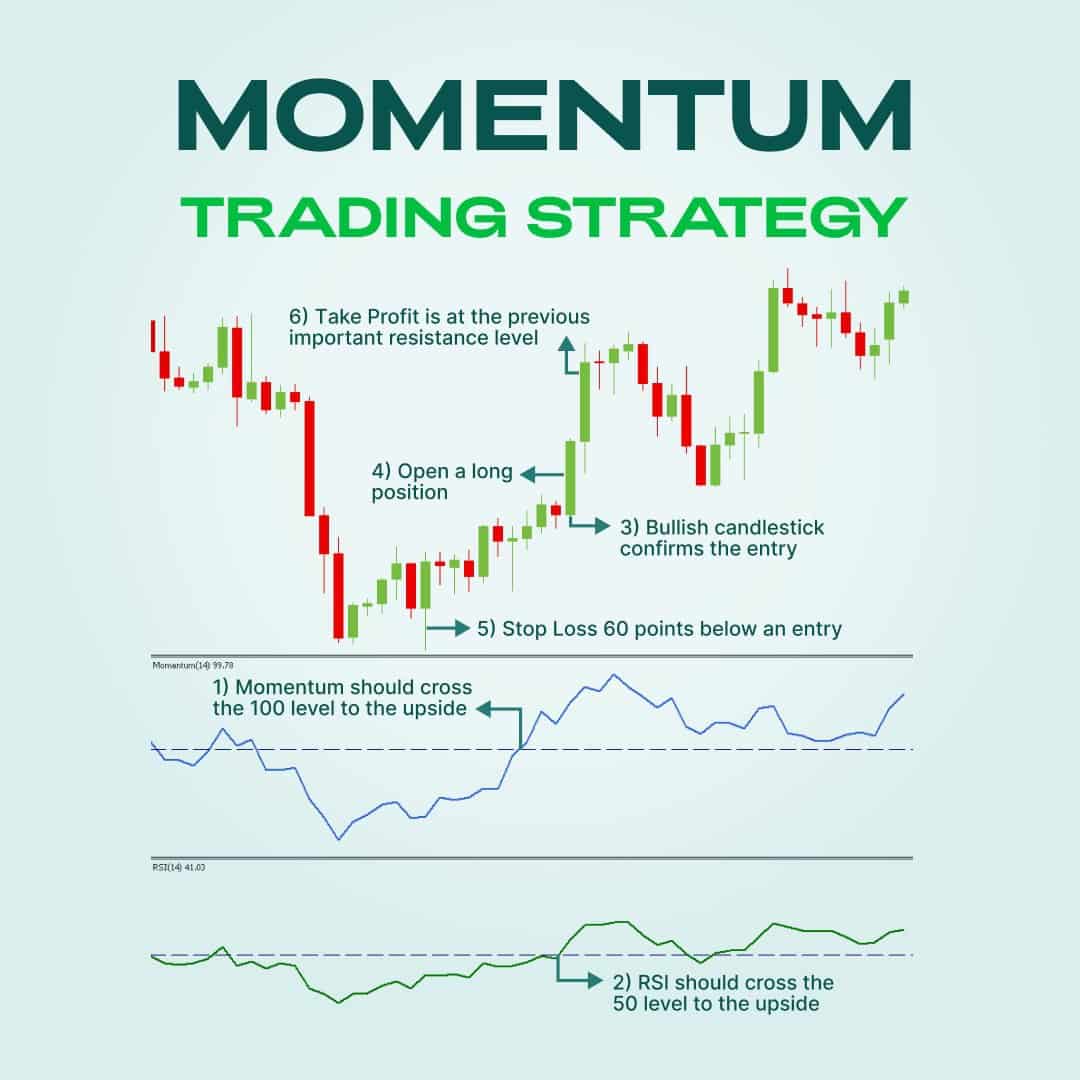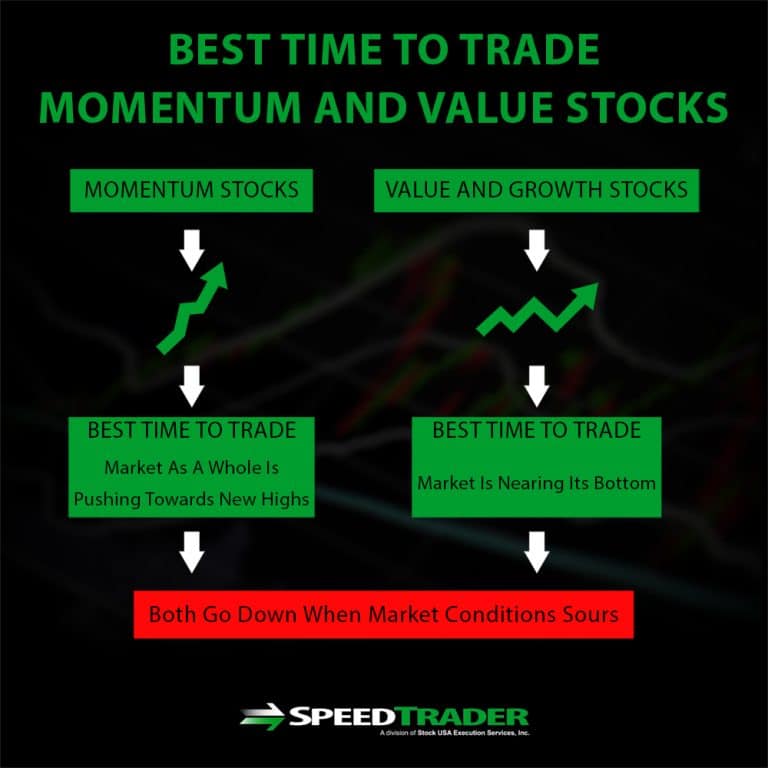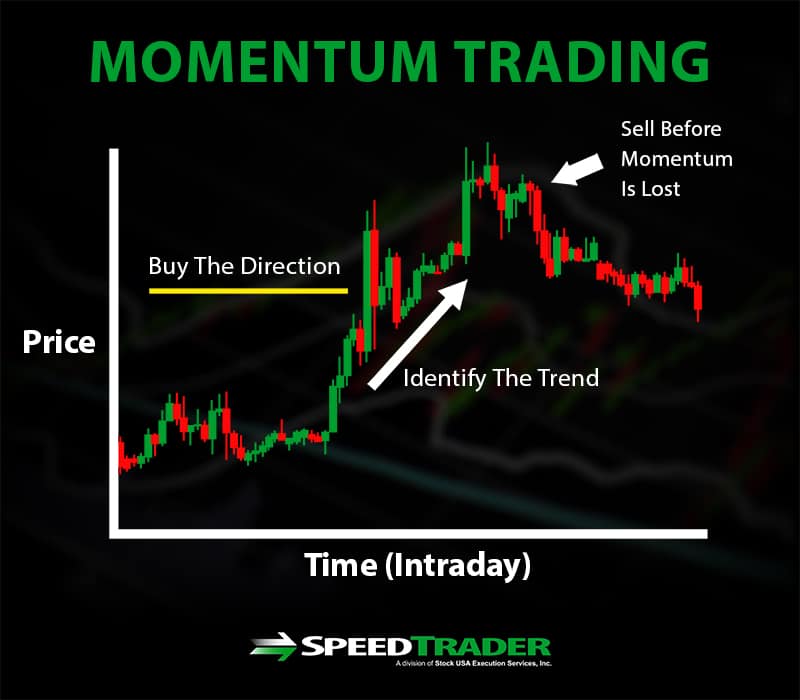What is Momentum Trading and How Can Volume Data Help?
Momentum trading is a popular investment strategy that involves buying stocks with strong upward trends and selling those with weak downward trends. The goal is to capitalize on the momentum of the market and generate profits in the short term. One key factor that can help predict stock prices in this strategy is volume data. Volume refers to the number of shares traded during a specific period and can be used as an indicator of market interest and liquidity.
Volume data is important in momentum trading because it can provide insights into the strength of price trends. When a stock is experiencing high volume, it may indicate that the trend is strong and likely to continue. Conversely, low volume can suggest that the trend is weakening and may be about to reverse. By analyzing volume trends, traders can make more informed decisions about when to buy and sell stocks, leading to potentially higher profits.
Moreover, volume data can help traders identify key levels of support and resistance. These levels represent the price points at which a stock is likely to find buying or selling pressure, and can be used to inform trading decisions. By combining volume analysis with other technical indicators, traders can gain a more complete picture of a stock’s potential and make more accurate predictions about its future price movements.
In summary, volume data is a valuable tool for momentum traders looking to predict stock prices. By analyzing volume trends and identifying key levels of support and resistance, traders can make more informed decisions about when to buy and sell stocks, potentially leading to higher profits. In the following sections, we will explore how to use volume data to predict stock prices in more detail, including real-world examples and potential limitations of this approach.

Understanding Volume Data and Its Relevance to Stock Prices
Volume data is a critical factor in stock trading, providing insights into market sentiment and the strength of price trends. In simple terms, volume refers to the number of shares traded during a specific period. By analyzing volume trends, traders can make more informed decisions about when to buy and sell stocks, potentially leading to higher profits.
Volume data can indicate market sentiment by reflecting the level of interest in a particular stock. When a stock experiences high volume, it may suggest that investors are becoming increasingly bullish or bearish on the stock, leading to a potential price movement. Conversely, low volume can indicate a lack of interest in the stock, which may suggest that the current price trend is weak and could reverse at any time.
In addition to indicating market sentiment, volume data can also provide insights into the strength of price trends. When a stock is experiencing high volume and a strong price trend, it may suggest that the trend is likely to continue. Conversely, low volume and a weak price trend may indicate that the trend is about to reverse. By analyzing volume trends, traders can gain a better understanding of the strength of a price trend and make more informed decisions about when to buy and sell stocks.
Volume data can also be used to identify key levels of support and resistance. These levels represent the price points at which a stock is likely to find buying or selling pressure, and can be used to inform trading decisions. By combining volume analysis with other technical indicators, traders can gain a more complete picture of a stock’s potential and make more accurate predictions about its future price movements.
In summary, volume data is a valuable tool for stock traders, providing insights into market sentiment and the strength of price trends. By analyzing volume trends, traders can make more informed decisions about when to buy and sell stocks, potentially leading to higher profits. In the following sections, we will explore how to use volume data to predict stock prices in momentum trading in more detail, including a step-by-step guide and real-world examples.

How to Use Volume to Predict Stock Prices: A Step-by-Step Guide
Volume analysis is a valuable tool for predicting stock prices in momentum trading. By analyzing volume trends, traders can gain insights into market sentiment and the strength of price trends, leading to more informed trading decisions. Here is a step-by-step guide on how to use volume data to predict stock prices:
- Identify the Trend: The first step in using volume to predict stock prices is to identify the trend. This can be done by analyzing the stock’s price movement over a period of time. If the stock price is consistently increasing, it is in an uptrend, and if it is consistently decreasing, it is in a downtrend. Volume analysis can help confirm the trend and provide insights into its strength.
- Analyze Volume Trends: Once the trend has been identified, the next step is to analyze volume trends. This involves looking at the volume of shares traded during the period of analysis. High volume during an uptrend can indicate that the trend is strong and likely to continue, while low volume can indicate that the trend is weak and could reverse. Conversely, high volume during a downtrend can indicate that the trend is strong and likely to continue, while low volume can indicate that the trend is weak and could reverse.
- Identify Key Levels of Support and Resistance: Volume analysis can also be used to identify key levels of support and resistance. These levels represent the price points at which a stock is likely to find buying or selling pressure, and can be used to inform trading decisions. By analyzing volume trends at these levels, traders can gain insights into the strength of the support or resistance and make more informed decisions about when to buy or sell.
- Combine Volume Analysis with Other Technical Indicators: Volume analysis is most effective when combined with other technical indicators. For example, traders can use moving averages, relative strength index (RSI), or other indicators to confirm the trend and provide additional insights into the stock’s potential. By combining volume analysis with other technical indicators, traders can gain a more complete picture of a stock’s potential and make more accurate predictions about its future price movements.
- Monitor Volume Trends Regularly: Finally, it is important to monitor volume trends regularly. Volume trends can change quickly, and it is essential to stay up-to-date with the latest trends to make informed trading decisions. By monitoring volume trends regularly, traders can identify potential changes in market sentiment and adjust their trading strategies accordingly.
In summary, volume analysis is a valuable tool for predicting stock prices in momentum trading. By following these steps, traders can gain insights into market sentiment and the strength of price trends, leading to more informed trading decisions. However, it is important to remember that volume analysis is not foolproof and should be used in conjunction with other technical indicators and fundamental analysis to provide a more comprehensive view of a stock’s potential.

Real-World Applications of Volume-Based Momentum Trading
Momentum trading is a strategy that involves buying stocks with strong upside momentum and selling those with weak momentum. Volume data can be a valuable tool in this strategy, as it can provide insights into market interest and liquidity. Here are some successful examples of momentum traders who have used volume data to inform their trading decisions:
- Jesse Livermore: Livermore was a legendary trader who made a fortune by using volume analysis to predict stock price movements. He believed that volume was a leading indicator of market sentiment and used it to identify key levels of support and resistance. By analyzing volume trends, Livermore was able to predict the 1929 stock market crash and reportedly made $100 million in profits.
- Paul Tudor Jones: Jones is a successful hedge fund manager who is known for his use of volume analysis in his trading strategy. He believes that volume is a key indicator of market sentiment and uses it to identify trends and predict price movements. In an interview, Jones stated, “I’m a big believer in volume, and I think that volume is a great predictor of future price action.”
- Steve Cohen: Cohen is a billionaire hedge fund manager who is known for his use of technical analysis in his trading strategy. He believes that volume is a valuable tool in predicting stock price movements and has stated, “Volume is a very important indicator for me. I like to see heavy volume on a move because it shows that there is conviction behind the move.”
These traders have used volume analysis to achieve significant success in their momentum trading strategies. By analyzing volume trends, they have been able to identify key levels of support and resistance, predict price movements, and make more informed trading decisions. However, it is important to note that volume analysis is not foolproof and should be used in conjunction with other technical indicators and fundamental analysis to provide a more comprehensive view of a stock’s potential.
Potential Limitations and Risks of Volume-Based Momentum Trading
While volume analysis can be a valuable tool in momentum trading, it is important to be aware of its potential limitations and risks. Here are some factors to consider:
- Interpreting volume trends in illiquid stocks: Volume analysis is less reliable in illiquid stocks, as there may not be enough trading activity to provide accurate signals. This can lead to false signals and incorrect predictions. It is important to use other technical indicators and fundamental analysis to confirm volume trends in illiquid stocks.
- Potential for false signals: Volume analysis is not foolproof and can sometimes generate false signals. For example, a sudden spike in volume may be caused by a large institutional investor buying or selling a position, rather than a change in market sentiment. It is important to use volume analysis in conjunction with other technical indicators and to confirm trends with other data points before making trading decisions.
- Importance of risk management: As with any trading strategy, risk management is crucial in volume-based momentum trading. It is important to set stop-loss orders and take-profit levels to manage risk and protect profits. Traders should also be aware of market conditions and adjust their strategies accordingly. For example, during periods of high volatility, volume trends may be more difficult to interpret and may require more conservative trading strategies.
By being aware of these limitations and risks, traders can use volume analysis more effectively in their momentum trading strategies. It is important to remember that no single indicator is foolproof, and that using a combination of technical and fundamental analysis can provide a more comprehensive view of a stock’s potential.

Combining Volume Analysis with Fundamental Analysis
While volume analysis can provide valuable insights into market sentiment and the strength of price trends, it is important to remember that it is just one piece of the puzzle. Combining volume analysis with fundamental analysis can provide a more comprehensive view of a stock’s potential and help traders make more informed decisions.
Fundamental analysis involves evaluating a company’s financial health, management team, and market position to determine its intrinsic value. By comparing a stock’s current price to its intrinsic value, traders can identify undervalued or overvalued stocks and make investment decisions based on their long-term potential.
When used in conjunction with volume analysis, fundamental analysis can help traders identify stocks that are experiencing both technical and fundamental strength. For example, if a stock is experiencing high volume and a rising trend, and its financials show strong earnings and revenue growth, it may be a good candidate for a momentum trade.
Successful traders such as Warren Buffett and Peter Lynch have used fundamental analysis to inform their investment decisions and achieve long-term success. By combining fundamental analysis with volume analysis, traders can gain a better understanding of a stock’s potential and make more informed trading decisions.
To use fundamental analysis in conjunction with volume analysis, traders can start by researching a company’s financials, including its income statement, balance sheet, and cash flow statement. They can also look at key financial ratios such as the price-to-earnings ratio, price-to-book ratio, and return on equity to get a sense of the company’s financial health.
Additionally, traders can evaluate the company’s management team, competitive position, and market trends to get a sense of its long-term potential. By combining this information with volume analysis, traders can make more informed decisions and increase their chances of success in momentum trading.

Tools and Resources for Analyzing Volume Data
To effectively use volume data to predict stock prices in momentum trading, traders need access to high-quality data and analysis tools. Here are some resources that can help:
Charting Software: Charting software allows traders to visualize volume data and other technical indicators in real-time. Some popular charting software options include TradingView, Thinkorswim, and MetaTrader. These tools offer a range of features, including customizable charts, technical studies, and drawing tools, that can help traders analyze volume trends and identify key levels of support and resistance.
Data Providers: Traders also need access to accurate and reliable volume data. Data providers such as Yahoo Finance, Nasdaq, and Bloomberg offer real-time volume data for a wide range of stocks and indices. Some data providers also offer historical volume data, which can be useful for analyzing trends and identifying patterns.
Educational Resources: To get the most out of volume analysis, traders need to understand how to interpret volume trends and combine them with other technical indicators. Educational resources such as online courses, webinars, and trading books can help traders develop their skills and improve their understanding of volume analysis.
One popular resource for traders is the book “Volume Trading” by Anna Coulling. This book provides a comprehensive guide to using volume data to predict stock prices and offers practical tips and strategies for traders of all levels.
Another valuable resource is the online course “Technical Analysis: Volume and Volatility” offered by Udemy. This course covers the basics of volume analysis and teaches traders how to interpret volume trends, identify key levels of support and resistance, and combine volume analysis with other technical indicators.
By using these tools and resources, traders can effectively analyze volume data and use it to predict stock prices in momentum trading. However, it’s important to remember that no tool or resource can guarantee success. Traders should always use risk management techniques and combine volume analysis with other forms of analysis, such as fundamental analysis, to make informed trading decisions.
/stock_chart_technical_analysis_volume_shutterstock_479286010-5bfc2fe4c9e77c0051809734.jpg)
Conclusion: The Power of Volume in Momentum Trading
In conclusion, using volume to predict stock prices in momentum trading can provide valuable insights into market interest and liquidity. By analyzing volume data, traders can gain a better understanding of market sentiment and the strength of price trends, allowing them to make more informed trading decisions.
To effectively use volume data in momentum trading, traders should follow a step-by-step process that includes interpreting volume trends, identifying key levels of support and resistance, and combining volume analysis with other technical indicators. By doing so, traders can improve their accuracy in predicting stock prices and increase their chances of success in the market.
While there are potential limitations and risks to using volume data, such as interpreting trends in illiquid stocks and the potential for false signals, these can be mitigated through proper risk management techniques and a comprehensive understanding of volume analysis.
Furthermore, combining volume analysis with fundamental analysis can provide a more comprehensive view of a stock’s potential, allowing traders to make more informed decisions based on both technical and fundamental factors. Successful traders have used this approach to achieve impressive results, highlighting the potential benefits of incorporating volume analysis into a momentum trading strategy.
To get started with volume analysis, traders can utilize a variety of tools and resources, such as charting software, data providers, and educational resources. By investing in these resources and developing their skills in volume analysis, traders can improve their ability to predict stock prices and enhance their overall trading performance.
In summary, using volume to predict stock prices in momentum trading is a valuable approach that can provide traders with a competitive edge in the market. By following best practices and utilizing the right tools and resources, traders can harness the power of volume analysis to achieve their financial goals and succeed in the world of momentum trading.

